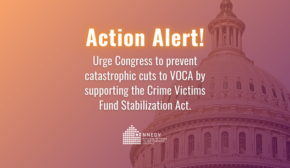Honoring National Youth HIV/AIDS Awareness Day
April 10, 2016
HIV/AIDS is not a disease of the past. It is something we should all be concerned about and fighting to eradicate. Today, on National Youth HIV/AIDS Awareness Day, we recognize that youth (ages 13-24) account for 26 percent of new infections and over 50 percent of youth infected with HIV are unaware of their status. [1] Furthermore, in 2010, Black youth accounted for an estimated 57 percent of all new HIV infections among youth in the United States, followed by Hispanic/Latino (20 percent) and white (20 percent) youth. [1] An intersectional approach that is informed by community voices is needed in order to eradicate HIV/AIDS. Services, outreach, education, and support need to be accessible to youth in marginalized communities.
Prevention must be prioritized in all communities across the country. Effective prevention strategies include: strengthening sexual education in schools; openly discussing Sexually Transmitted Infections (STIs) and condom use; and teaching students about healthy relationships and the red flags of abuse. When examining the intersection of dating violence and HIV, it is important to initiate conversations about relationships, sex, and sexuality as opposed to regarding these topics as taboo. It is important to really listen to what youth have to say about their lives, their health, and their relationships. It is crucial to create space where youth can discuss concerns about current or former relationships. One in three young people (ages 16-24) will experience some form of dating or sexual violence. [2] Children and young adults that have experienced violence are more likely to acquire HIV, STIs, or become pregnant. [3]
Young people must be informed and supported in their health care decisions. Barring access to reproductive health care leads to an increase in unintended pregnancies and higher rates of HIV. [4] The passage of laws that discriminate against LGBTQ individuals creates an environment where accessing testing and supportive services becomes more difficult due to cultural stigma and lack of education. Consequently, young gay and bisexual men accounted for 72 percent of all new infections among youth in 2010. [1] Most importantly, lack of access to testing and care can lead to health complications later in life.
The national effort to end HIV and domestic violence is not over. It is absolutely necessary to strengthen prevention efforts in order to put an end to domestic violence, dating violence, sexual assault, stalking, and HIV/AIDS.
—
[1] HIV Among Youth, June 2015. Center for Disease Control (CDC). http://www.cdc.gov/hiv/group/age/youth/index.html.
[2] How Common is Dating Violence, March 2016. Break the Cycle. http://www.breakthecycle.org/how-common-dating-violence.
[3] Violence & Harassment. Advocates for Youth. http://www.advocatesforyouth.org/topics-issues/violence-harassment?task=view.
[4] The Sexual and Reproductive Health of Youth: A Global Snapshot http://www.advocatesforyouth.org/storage/advfy/documents/fsglobal.pdf.





